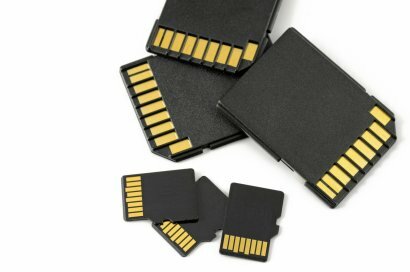Secure Digital Cards (SD / miniSD / microSD)
Miscellanea / / July 04, 2021
By Guillem Alsina González, in Jul. 2017
 They are the queens when it comes to storage for digital cameras and smartphones, and who else who less, we all use them, but what exactly do we have in our hands when we hold them?
They are the queens when it comes to storage for digital cameras and smartphones, and who else who less, we all use them, but what exactly do we have in our hands when we hold them?
Secure Digital cards are the fruit of evolution MMC (MultiMediaCard) as Format standardized for the storage and sharing of information in electronic format.
They are flat cards, rectangular in shape, but with one of the angles slanted, and of which there are three measures: SD, miniSD, and microSD, from highest to lowest, being the most popular SD (for being the first and still used to a great extent in cameras) and microSD (for its widespread use in the field of the smartphones).
All three formats depend on the Association SD Cards (SD Card Association), an entity that currently groups some 400 companies, and that was founded by the three companies that created this standard: Panasonic, Toshiba and SanDisk.
There are four different types of cards according to characteristics such as the speed of access to the data they provide.
- The first of these types is the SDSC, which is the original format (in fact, its name means Secure Digital Standard Capacity), and that provides a velocity 12.5 MB / s bus speed.
- The next evolution of these cards was the SDHC (Secure Digital High Capacity), which constitutes version 2.0 of the standard announced in January 2006, and in which the limit of 2 GB per card is exceeded, and these can reach up to 32 GB, although the The format is identical to the original SD both physically and electrically, and compatible readers accept SDSCs without problems, as in all generations later. They also double the speed, reaching 25 MB / s.
- The SDXC (Secure Digital Extended Capacity) allow to overcome the limitation of 32 GB present in SDHC cards, with a maximum limit of 2 Terabytes at a speed of 25 MB / s, identical to that offered by SDHC cards.
This format was introduced in January 2009, and is defined in version 3 of the SD card standard, being the first to adopt the SD card format. file exFAT replacing FAT, something I'll talk about later.
In this case, the speed increases again, oscillating between 50 and 104 MB / s. Version 4 of the standard allows you to increase this speed up to 312 MB / s thanks to the use of two lines of communication.
SDIO cards (Secure Digital Input / Output) allow you to connect a peripheral via a prepared SD card slot.
 It is a format designed for use in PDAs, laptops or devices that have a low capacity for extension, for the connection of peripherals such as cameras, communication receivers of some kind (GPS, TV), or cards network.
It is a format designed for use in PDAs, laptops or devices that have a low capacity for extension, for the connection of peripherals such as cameras, communication receivers of some kind (GPS, TV), or cards network.
On the one hand, the card is exactly the same as any data SD, while on the other, it has the functionality provided by the peripheral it integrates.
Normally, to ensure compatibility with all operating systems and devices, the file system adopted by these cards is the exFAT, which is a variant of FAT for large storage devices, as it overcomes the addressing limitations of FAT traditional.
When purchasing a credit card memory (either any of the types of SD or others), you have to take into account the speed at which they can read and write data, since normally, their function will be to serve as a storage medium for multimedia content recording applications, as in the case of photo / video cameras, or microSD from the smartphones.
For all three types of SD cards, the speed is indicated by the “class” of the card, which is a number that indicates the minimum recording speed in MB / s (Megabytes per second) sequential.
Thus, a Class 2 card is guaranteed to record at at least 2MB / s, while a Class 4 card is guaranteed to record at a minimum of 4MB / s.
Naturally, the higher the number, the higher the performance of the SD card in our devices, but we will also need the slot to be able to take advantage of its speed.
Photos: Fotolia - bilderstoeckchen - djama
Topics on Secure Digital Cards (SD / miniSD / microSD)


